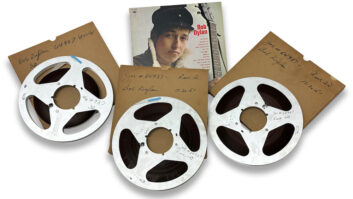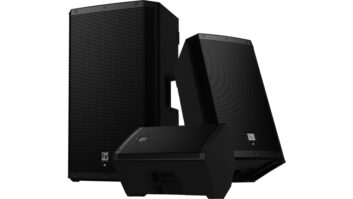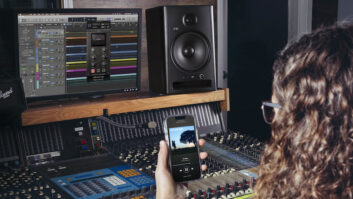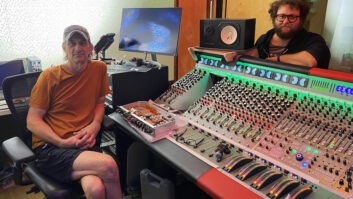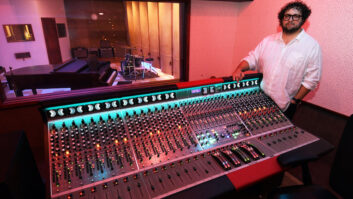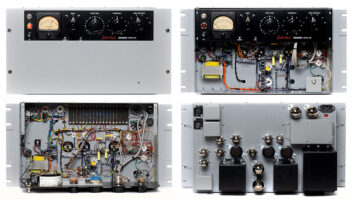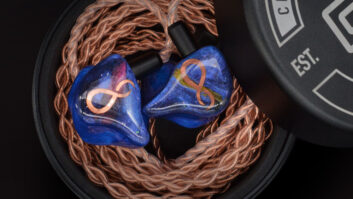Los Angeles, CA (October 29, 2019)—Listen to almost any track on L.A.-based duo Collapsing Scenery’s recently released debut album Stress Positions and you might be hard-pressed to guess what year it was recorded. That’s likely due to the eclectic influences of band members Reggie Debris and Don Devore, but also their production techniques, which are staunchly analog but also dependent on digital technology.
It’s difficult to put a finger on the band’s timeless sound, an eclectic blend of electro, post-punk, chillwave and dancehall that is simultaneously retro and totally current. But punk, arguably, is at its roots (both musicians come from punk and hardcore backgrounds) in terms of attitude, approach and especially content, with many of the lyrics railing against injustice.
The album, available in a die-cut, triple-gatefold, double-vinyl package with interchangeable cover art, is the result of the past five years of the band’s six-year existence. Not that they haven’t been productive; they have also released a string of singles and EPs. But, says multi-instrumentalist and lead vocalist Reggie Debris, “The intention was to make a full body of work. There are some of the earliest and some of the most recent recordings on the album.”
Sessions kicked off at Wheeler Ranch in rural Texas, a recommendation from engineer Danny Taylor of Brooklyn’s House Under Magic, who has been a constant collaborator with the band. The sessions gave Debris and Devore, with drummer Ryan Rapsys, an opportunity to familiarize themselves with the rig they had assembled for recording and performing, centered largely on Korg’s Monotribe and Volca Bass, and Elektron’s Analog 4 and Analog Keys. “I still play guitar, but I can get really expressive on those Elektron machines in really varied ways in all sorts of complex musical situations,” says Devore.
“Don did a bunch of research leading up to that recording about building a rig and the kind of gear that we wanted. We recorded for a week straight and had 24 hours of jams by the end of it,” Debris reports. “Then we started to chop it up, piece it together and turn it into songs. And nothing was on the grid, so that was a challenge.”
“It’s like 15,000 edits,” says Devore. “That gestation process is where the flavor is.”
“Some of the oddness and eccentricities definitely come from that piecemeal approach,” agrees Debris. “Certain songs I would write on a keyboard and then we’d record them, but most of them came from jams.”
Work continued at other studios over subsequent years between bouts of globetrotting and other projects. The album credit list is extensive, encompassing numerous guest artists and collaborators, plus studios including Fluxivity, Sonic Six, Mozart, O’Deer, Transmitter Park/House Under Magic, Dubway and Strange Weather in the New York metro area; Big Yard and Gee Jam in Jamaica; and, in the L.A. area, Sunset Sound, Redstar, comp-ny and the band’s downtown space. Oh, and Sönghellir, a reverberant cave in Iceland, heard to great effect on the a cappella opening track “I Never Knew.”
But home away from home was LAFX in North Hollywood. “In previous recordings, we found API consoles were the best, so we tried to find the biggest one we could,” says Debris.
“LAFX has a vintage API, 48 across. The headroom is crazy,” says Devore. “It’s a beautiful studio and the best people. Spencer Guerra, who we did 108 sessions with, was the best assistant anybody could wish for.”
Since LAFX has a rental department that can fill any gaps in the already extensive outboard selection in the room, Devore, the band’s principal mixer, was in his element. Some favorite pieces included an Eventide H300, Lexicon PCM 42, Pultec stereo EQs, and Neve 33609 and UA 1176 compressors. At the end of the chain was a Maselec mastering EQ—an idea borrowed from producer Dave Friedman, Devore reports. “And we had a couple of Studer and ATR recorders as slap-backs on auxes 1 and 2 at all times.”
“If there’s anything that sets this record and our recordings in general apart, it’s that the writing, recording and mixing process is completely enmeshed,” says Debris. “Everything is happening all at once at all times—even mastering, to some extent, because of the Maselec. A lot of the stuff was more or less mastered by the time we gave it to Heba Kadry at Timeless Mastering in Brooklyn. She’s an essential part of the team. Every time the masters came back, we were so stoked.” (She has since left Timeless and opened Heba Kadry Mastering.)
The mixes that ended up on the record were carefully chosen, Debris says, but sending stems out for remixing has reminded him of some elements that weren’t used. “Sometimes I’ll hear alternate mixes and there are little bits that I wish were on the album. There’s all kinds of stuff that pops up that we’ve forgotten about. But you have to let that stuff go.”
Although they spent time fine-tuning the Stress Positions mixes, the old-school approach of fingers on faders means that each pass can often be a unique performance. “Not only do I like the eccentricity and particularity of that, but also it’s like playing the board as an instrument. It’s fully part of the song,” says Debris. “That eccentricity gets stamped out when you mix in the box.”
Collapsing Scenery takes its analog audio-centric concept to the live stage. “We travel with our own compact yet powerful P.A. and can set up anywhere,” says Devore. The concept was driven by bad experiences with previous bands: “Some of my least favorite experiences playing live ever are from being so far behind a P.A.”
The rig comprises DAS and Danley Sound boxes, including the latter’s SM80 tops and TH115 subs. “It’s so sexy to have a minimal three-way system,” says Devore. “It’s like the venue is a giant living room. It’s all behind us, sound system-style, and we have two mics, gated. We set up on stage and don’t even use the house P.A. Our soundcheck is 15 seconds.”
Collapsing Scenery • www.collapsingscenery.com
